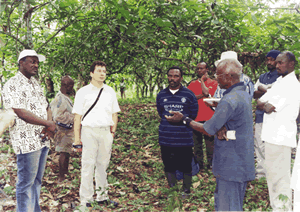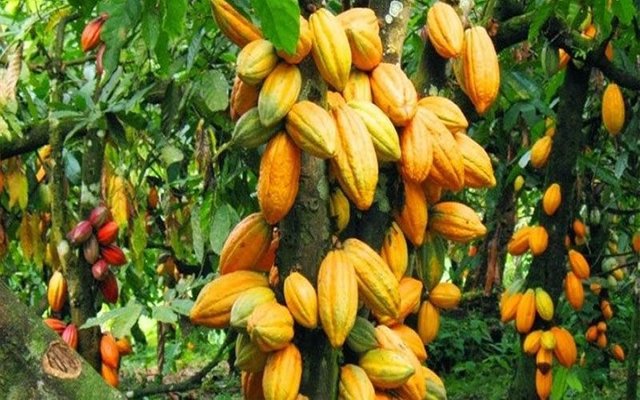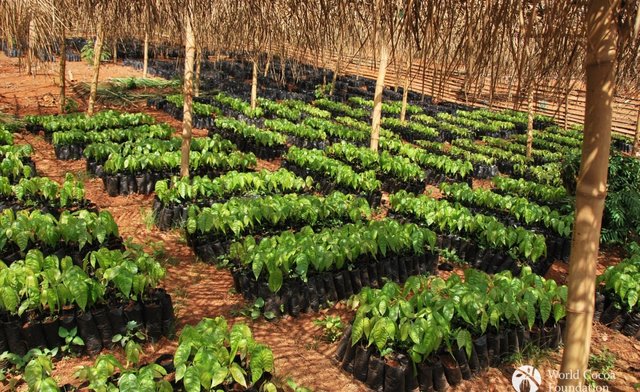RECENT DEVELOPMENT OF AGRICULTURE IN COMEROON.
As we all know, emerging Agriculture Technologies
Venture capitalists invested more than $2 billion in agriculture technology startups in 2014 and again in 2015. That trend is expected to continue in 2016 because the demand for innovative farm technology is high, and when inventors show results, modern farmers have demonstrated a willingness to embrace those inventions and new techniques. With that in mind, here are seven emerging technologies that can literally change the agricultural landscape in the years ahead.
- Soil and Water Sensorsoil and Water Sensors
- Soil and Water Sensors
- Weather Tracking
- Satellite Imaging
- Pervasive Automation
- Minichromosomal Technology
- RFID Technology
- Vertical Farming
Final ThoughtsPerhaps the equipment having the most immediate effect are soil and water sensors. These sensors are durable, unobtrusive and relatively inexpensive. Even family farms are finding it affordable to distribute them throughout their land, and they provide numerous benefits. For instance, these sensors can detect moisture and nitrogen levels, and the farm can use this information to determine when to water and fertilize rather than rely on a predetermined schedule. That results in more efficient use of resources and therefore lowered costs, but it also helps the farm be more environmentally friendly by conserving water, limiting erosion and reducing fertilizer levels in local rivers and lakes. - Weather Tracking
Although we still make jokes about our local meteorologists, the truth is that computerized weather modeling is becoming increasingly sophisticated. There are online weather services that focus exclusively on agriculture, and farmers can access these services on dedicated onboard and handheld farm technology but also via mobile apps that run on just about any consumer smartphone. This technology can give farmers enough advanced notice of frost, hail and other weather that they can take precautions to protect the crops or at least mitigate losses to a significant degree. - Satellite Imaging
As remote satellite imaging has become more sophisticated, it’s allowed for real-time crop imagery. This isn’t just bird’s-eye-view snapshots but images in resolutions of 5-meter-pixels and even greater. Crop imagery lets a farmer examine crops as if he or she were standing there without actually standing there. Even reviewing images on a weekly basis can save a farm a considerable amount of time and money. Additionally, this technology can be integrated with crop, soil and water sensors so that the farmers can receive notifications along with appropriate satellite images when danger thresholds are met. - Pervasive Automation
Pervasive automation is a buzz term in the agriculture technology industry, and it can refer to any technology that reduces operator workload. Examples include autonomous vehicles controlled by robotics or remotely through terminals and hyper precision, such as RTK navigation systems that make seeding and fertilization routes as optimal as possible. Most farming equipment already adopts the ISOBUS standard, and that puts on the precipice of a farming reality where balers, combines, tractors and other farming equipment communicate and even operate in a plug-and-play manner. - Minichromosomal Technology
Perhaps one of the most exciting advents in agriculture technology is coming in a very tiny package. A minichromosome is a small structure within a cell that includes very little genetic material but can, in layman’s terms, hold a lot of information. Using minichromosomes, agricultural geneticists can add dozens and perhaps even hundreds of traits to a plant. These traits can be quite complex, such as drought tolerance and nitrogen use. However, what is most intriguing about minichromosomal technology is that a plant’s original chromosomes are not altered in any way. That results in faster regulatory approval and wider, faster acceptance from consumers. - RFID Technology
The soil and water sensors mentioned earlier have set a foundation for traceability. The industry has only begun to realize this infrastructure, but it’s taking shape quickly. These sensors provide information that can be associated with farming yields. It may seem like science fiction, but we’re living in a world where a bag of potatoes can have a barcode that you can scan with your smartphone in order to access information about the soil that yielded them. A future where farms can market themselves and have loyal consumers track their yields for purchase is not far-fetched. - Vertical Farming
Vertical farming has been a science fiction topic as far back as the 1950s and perhaps further, and now it’s not only scientifically viable but will be financially viable within the decade. Vertical farm technology Vertical farming a component of urban agriculture is the practice of producing food in vertically stacked layers. This offers many advantages. Perhaps the most obvious is the ability to grow within urban environments and thus have fresher foods available faster and at lower costs. However, vertical farming won’t be limited to just urban environments like initially expected. Farmers in all areas can use it to make better use of available land and to grow crops that wouldn’t normally be viable in those locations.
Final Thoughts
Technology is transforming nearly every aspect of our modern lives, and farming is no exception. The produce on your table tonight will have gotten there faster, fresher and more cost-effectively thanks to leading-edge technology in agriculture.
IMPORTANCE OF AGRICULTURE IN CAMEROON.
Agriculture technology will become ever more computerized in the decades ahead! Agriculture is the mainstay of Cameroon's economy, engaging an estimated 70 percent of the economically active population and accounting for an estimated 80 percent of the primary sector's contribution to the country'sAgriculture is the mainstay of Cameroon's economy, engaging an estimated 70 percent of the economically active population and accounting for an estimated 80 percent of the primary sector's contribution to the country's.In Cameroon, agriculture represents more than half of the country non-oil export revenues and employs almost 60 percent of the working population. Ninety percent of rural households are, in one way or another, employed in agriculture, and approximately one-third of them earn their living from export crops.
DISADVANTAGES OF AGRICULTURE IN CAMEROON.
Risks of child labor. The increased demand for agricultural products calls for increased labor to realize huge profits
Environmental pollution
Health issues
Agriculture leads to overgrazing
Agriculture may disturb the family dynamics
Spread of diseases
Unpredictable weather
SOLUTIONS TO THE PROBLEMS OF AGRICULTURE IN CAMEROON.
Provision of Adequate Education to Farmers
Efforts should be made to ensure that rural and urban dwellers get free or very affordable basic education. These will make it easier for them to learn about highly developed farming practices that improve efficiency. Also, continuous learning, via agriculture extension services, and training seminars, is vital for farmers in the agricultural sector to ensure that they are currently deploying the best practices on their farms and agribusiness.
- Provision Large Area of Land to Farmers
Government should make it easier for farmers to access lands for starting and expanding their farms in a commercial purpose in order produces large qualities of farm product for the entire globe. Farmers who have proven their efficiency should be given lands to rent at reduced cost with the option of purchasing such lands at reduced costs over a period of time. Also individuals and organizations who have unused lands should partner with farmers who would farm their lands until such a time when the lands are ready for their original purposes.
Solutions to the Problems of Agriculture
Read On: 12 Problems of Agricultural Development
- Reducing of the Cost Farmer Inputs to Farmers
Governments should reduce the costs of basic farm inputs like seeds, fertilizers, herbicides etc. which farmers need and distribute to farmers. Provisions should be made to ensure that these inputs get to farmers directly without middlemen or brokers. If these limiting factors can be effectively tackled in the state, the prospect for economic recovery and poverty reduction will be greatly enhanced.
- Encouragement of the Gender and Age in Farming Sector
Both gender and age should be encouraged to participate in agricultural sector to enhance more production for commercial purpose in the state. This can be done via sensitization campaigns to encourage both rural and urban women to pursue agricultural ventures. Also, special grants and financial incentives should be directed to female agricultural enterprises in order to ensure that benefits from the skill and intelligence that women can contribute to the economy. Agriculture is not only for male but is for all.
- Farmers should be Encourage to Join Co-operative Society
Farmers should come together to form more co-operative groups as this will make it easier and possible for them to have access to farming input, training, equipment and capital. They need to take their farming operations to a higher level. Being part of a co-operative (mastermind group) will also opens farmers to learning farming practices from one another.
- Provision of Fund to the Farmers
The average local farmers are facing the problem hardships, challenges of poverty and lack of fund. They, particularly have very little or no funds to expand their farm potentials. Agricultural funds really need to be made available for these farmers as this is still part of the most effective solutions to the nation's food and agricultural development. Another plus to funding is to provide these farmers with hybrid seeds and simple agricultural machines at subsidized rates.

 source
source

